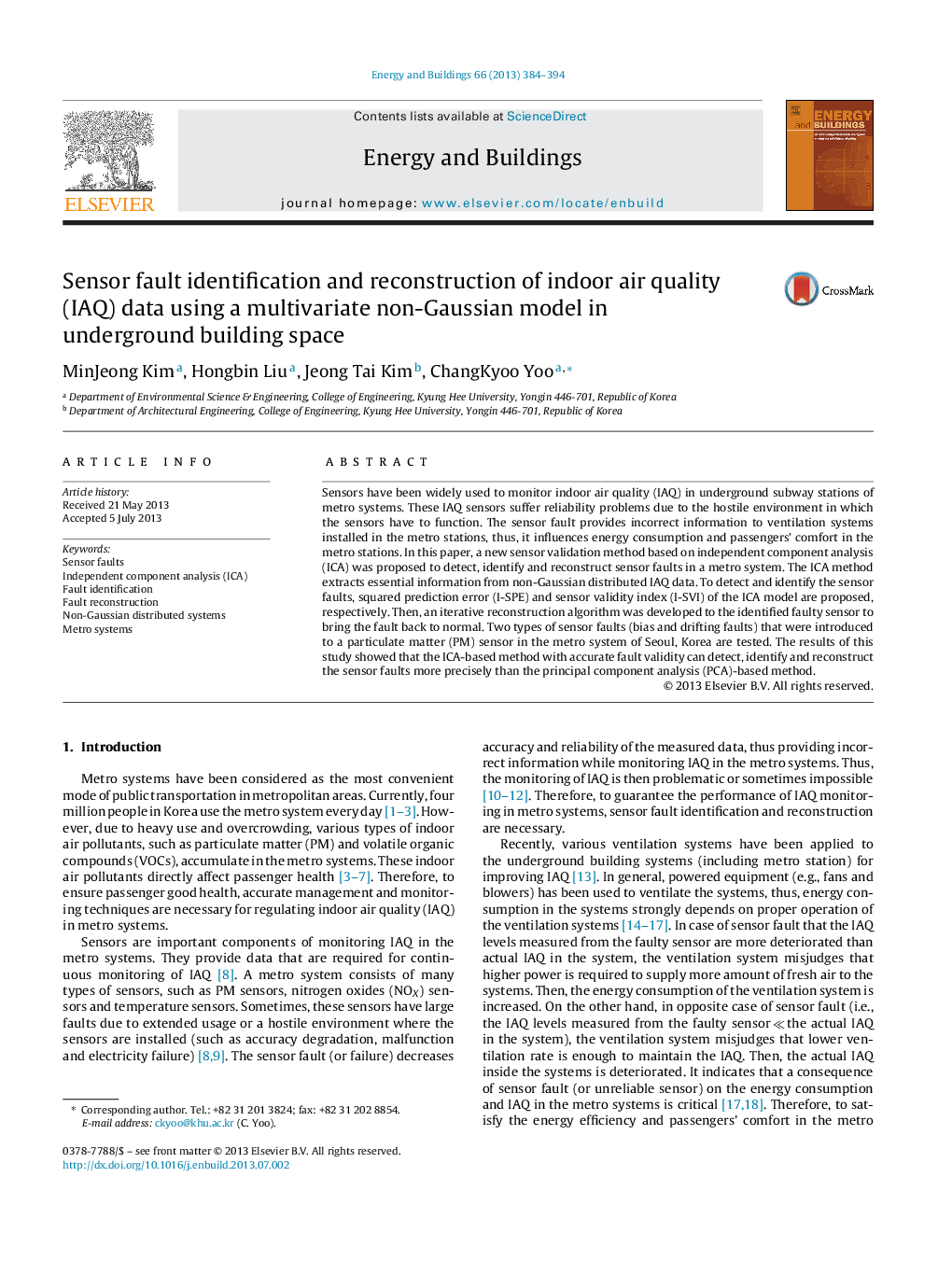| Article ID | Journal | Published Year | Pages | File Type |
|---|---|---|---|---|
| 6734740 | Energy and Buildings | 2013 | 11 Pages |
Abstract
Sensors have been widely used to monitor indoor air quality (IAQ) in underground subway stations of metro systems. These IAQ sensors suffer reliability problems due to the hostile environment in which the sensors have to function. The sensor fault provides incorrect information to ventilation systems installed in the metro stations, thus, it influences energy consumption and passengers' comfort in the metro stations. In this paper, a new sensor validation method based on independent component analysis (ICA) was proposed to detect, identify and reconstruct sensor faults in a metro system. The ICA method extracts essential information from non-Gaussian distributed IAQ data. To detect and identify the sensor faults, squared prediction error (I-SPE) and sensor validity index (I-SVI) of the ICA model are proposed, respectively. Then, an iterative reconstruction algorithm was developed to the identified faulty sensor to bring the fault back to normal. Two types of sensor faults (bias and drifting faults) that were introduced to a particulate matter (PM) sensor in the metro system of Seoul, Korea are tested. The results of this study showed that the ICA-based method with accurate fault validity can detect, identify and reconstruct the sensor faults more precisely than the principal component analysis (PCA)-based method.
Keywords
Related Topics
Physical Sciences and Engineering
Energy
Renewable Energy, Sustainability and the Environment
Authors
MinJeong Kim, Hongbin Liu, Jeong Tai Kim, ChangKyoo Yoo,
